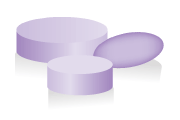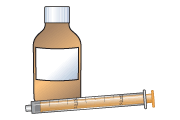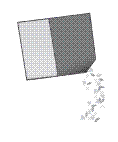Clarithromycin for bacterial infections
This leaflet is for parents and carers about how to use this medicine in children. Our information may differ from that provided by the manufacturers, because their information usually relates to adults. Read this leaflet carefully. Keep it somewhere safe so that you can read it again.
If your child has ever had a reaction to any antibiotic, tell your doctor before giving Clarithromycin.
Name of medicine
Clarithromycin
Common brands: Klaricid
Modified release tablets: Mycifor XL, Klaricid XL
Why is it important for my child to take Clarithromycin?
It is important that your child takes this medicine in the way that your doctor has told you to so that it kills the harmful bacteria and gets rid of the infection.
What is Clarithromycin available as?
- Tablets: 250 mg or 500 mg
- Liquid medicine: 125 mg or 250 mg in 5 mL
- Granules: 250 mg (per sachet)
When should I give Clarithromycin
The Clarithromycin is usually given twice each day. Give one dose in the morning and one in the evening. Ideally these times are 10–12 hours apart. For example, this could be between 7am and 8am and between 7pm and 8pm.
Give the medicine at about the same time(s) each day so that this becomes part of your child’s daily routine, which will help you to remember.
How much should I give?
Your doctor will work out the amount of Clarithromycin (the dose) that is right for your child. The dose will be shown on the medicine label.
It is important that you follow your doctor’s instructions about how much to give.
How should I give Clarithromycin?

Tablets
- Tablets should be swallowed with a glass of water, squash or juice. Your child should not chew the tablet.

Liquid medicine
- Shake the medicine well.
- Measure out the right amount using an oral syringe or a medicine spoon. You can get these from your pharmacist. Do not use a kitchen teaspoon as it will not give the right amount.

Granules
- Sprinkle or stir the granules into a small amount of soft food (e.g. yogurt) or a small drink. Your child should then swallow the food or drink straight away, without chewing. Make sure that they take it all.
When should the medicine start working?
Your child should start to get better after taking the medicine for 2-3 days. It is important that they take the whole course of the medicine that has been prescribed. Do not stop early.
If your child has a fever (temperature above 38°C) that does not get better, or they become more unwell, contact your doctor.
What if my child is sick (vomits)?
- If your child is sick less than 30 minutes after having a dose of Clarithromycin, give them the same dose again.
- If your child is sick more than 30 minutes after having a dose of Clarithromycin, do not give them another dose. Wait until the next normal dose.
If your child is sick again, seek advice from your family doctor, nurse, pharmacist, or hospital. They will decide what to do based on your child’s condition and the specific medicine involved.
What if I forget to give it?
If you usually give it twice a day: If you remember up to 4 hours after you should have given a dose, give your child the missed dose. For example, if you usually give a dose at about 7am, you can give the missed dose at any time up to 11am. If you remember after that time, do not give the missed dose. Give the next dose as usual.
What if I give too much?
You are unlikely to cause harm if you give an extra dose of Clarithromycin by mistake. If you are concerned that you may have given too much, contact your doctor or local NHS services (details at end of leaflet). Have the medicine or packaging with you if you telephone for advice.
Are there any possible side effects?
Side effects are rare with Clarithromycin and do not usually last for long. They will get better after a day or two as your child’s body gets used to the medicine, and should go away when the treatment course is finished.
Side effects you must do something about
If your child is short of breath or is wheezing, or their face, lips or tongue start to swell, or they develop a rash, they may be allergic to Clarithromycin. Take your child to hospital or phone for an ambulance straight away.
If your child complains of a fast or skipping heartbeat or pain in their chest, contact your doctor straight away.
Other side-effects you need to know about
- Your child may say that things smell or taste unusual or unpleasant.
- They may get sore lips or tongue, and the teeth or tongue may change colour.
Some children get diarrhoea, stomach pains and may feel sick or be sick (vomit) when they first start taking Clarithromycin. See the information on antibiotics below for advice on what to do.
Contact your doctor if your child has diarrhoea that goes on for more than 4 days or if it is severe and watery, or contains blood.
They may get headaches.
There may sometimes be other side effects that are not listed above. If you notice anything unusual and are concerned, contact your doctor. You can report any suspected side effects to a UK safety scheme at mhra.gov.uk/yellowcard
Can other medicines be given at the same time as Clarithromycin?
- You can give your child medicines that contain paracetamol or ibuprofen, unless your doctor has told you not to.
- Clarithromycin should not be taken with some medicines. Tell your doctor or pharmacist about any other medicines your child is taking before giving Clarithromycin.
Check with your doctor or pharmacist before giving any other medicines to your child. This includes herbal and complementary medicines.
General advice about medicines
If you think someone else may have taken the medicine by accident, contact your doctor straight away.
General advice about antibiotics
- It is vital that your child completes the course of antibiotic. This means that they must take the medicine for the number of days that the doctor has told you, or until all the tablets or capsules have been taken.
- Your child will probably start to feel better soon after starting to take the antibiotic. However, it takes a few days for the antibiotic to kill all the bacteria.
- If you stop giving the antibiotic too soon, the bacteria that are left will start to multiply again, and may cause another infection.
- There is also a risk that these bacteria will be ‘resistant’ to the first antibiotic. This means that it might not work next time, and your child might need a different antibiotic, which might not work as well or cause more side effects.
- Children are sometimes sick (vomit) or get diarrhoea when taking antibiotics. Encourage them to drink water to replace the fluid they have lost. You can also buy oral rehydration fluid from your pharmacist.
- Do not give your child any medicine to stop the diarrhoea unless your doctor has told you to.
- Try to give the antibiotic at about the same time(s) each day, to help you remember, and to make sure that there is the right amount of medicine in your child’s body to kill the bacteria.
- Only give this medicine to your child for their current infection.
- Never save medicine for future illnesses. Give old or unused antibiotics to your pharmacist to dispose of.
- Only give the antibiotic to the child it was prescribed for. Never give it to anyone else, even if their condition appears to be the same, as it could do harm.
- Antibiotics only kill bacteria; they do not kill viruses. This means that they do not work against colds, sore throats, flu or other infections that are caused by viruses. Your doctor will not prescribe antibiotics for these illnesses.
If you think someone else may have taken the medicine by accident, contact your doctor for advice.
Where should I keep this medicine?
- Keep the medicine in a cupboard, away from heat and direct sunlight.
- It does not need to be kept in the fridge.
- Make sure that children cannot see or reach the medicine.
- Keep the medicine in the container it came in.
Who to contact for more information?
Your child’s doctor, pharmacist or nurse will be able to give you more information about Clarithromycin and about other medicines used to treat infections.
England: NHS 111
Tel 111
www.nhs.ukScotland: NHS 24
Tel 111
www.nhs24.scotNorthern Ireland: NI Direct
Wales: NHS 111 Wales
Tel 111
www.111.wales.nhs.ukCopyright disclaimer
Version [2]. © NPPG, RCPCH and WellChild, all rights reserved. Review by May 2017.
The primary source for the information in this leaflet is the British National Formulary for Children. For details on any other sources used for this leaflet, please contact us through our website, www.medicinesforchildren.org.uk.
We take great care to make sure that the information in this leaflet is correct and up-to-date. However, medicines can be used in different ways for different patients. It is important that you ask the advice of your doctor or pharmacist if you are not sure about something. This leaflet is about the use of these medicines in the UK, and may not apply to other countries. The Royal College of Paediatrics and Child Health (RCPCH), the Neonatal and Paediatric Pharmacists Group (NPPG), WellChild and the contributors and editors cannot be held responsible for the accuracy of information, omissions of information, or any actions that may be taken as a consequence of reading this leaflet.
